Pandemic Architecture, an International Ideas Competition curated by the Design Ambassador for ARCHISEARCH.gr, invited the creative community to open up a dialogue and create a think tank, looking for ideas from the architectural and design community about the future of the living, the workspace, the public space and the tourism industry after the outbreak of Covid-19.
Balcony Urbanism, was shortlisted in top 50 out of 440 projects.
-text by the authors
Project Description
Throughout history, balconies have mostly been an additional part of architecture – an element that is decorative on the surface; however, its unique location – a buffer area between indoor and outdoor, private and public – makes it the backdrop for many human activities. It is the place for nature that brings some countryside lifestyle to the city; it is the place of art and music that the general public can enjoy; it is the place of power and authority where the announcement can be made high above; it is the place of rebellion and resistance to demonstrate opinions.
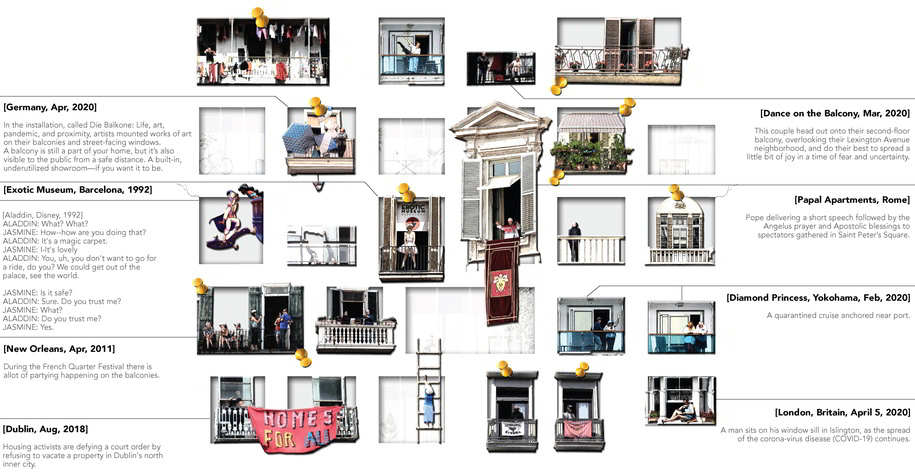
Whether it is pandemic, climate change, or other uncertainties that may become more frequent as the new normal, we draw our inspiration from the way people react in these situations. News about how people creatively use the balcony during COVID, and also what our friends and families have been doing tell us that the next generation of balconies may be one of the solutions.

When we are restrained indoor, the desire to connect to other people, to access the natural environment remains unchanged if not stronger. A balcony provides the opportunity to see and be seen in a controllable environment. The activities that people would like to share on their balconies expand from simply viewing, sipping a cup of tea to working, exercising, cooking, playing music, or even hosting a wedding ceremony.
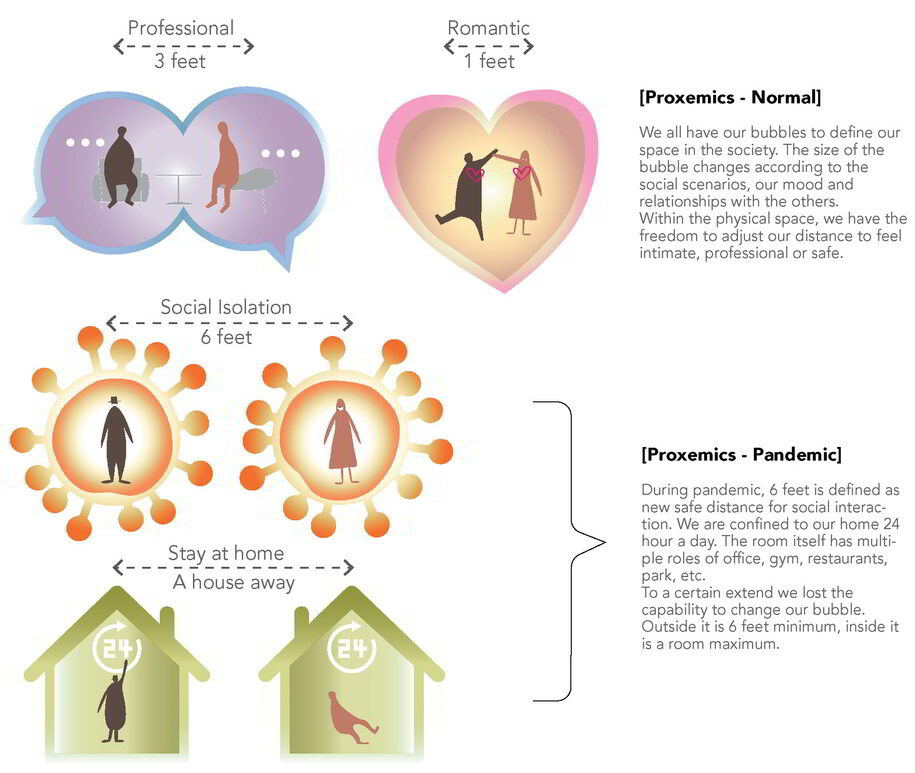
All these possibilities suggest a new type of unit design where the boundary between rooms is blurred and programs can be redistributed according to the need of tenants. The balcony constantly shrinks and expands depending on the way people choose to react to the space. Connections can be made between units through balconies if mutually agreed.
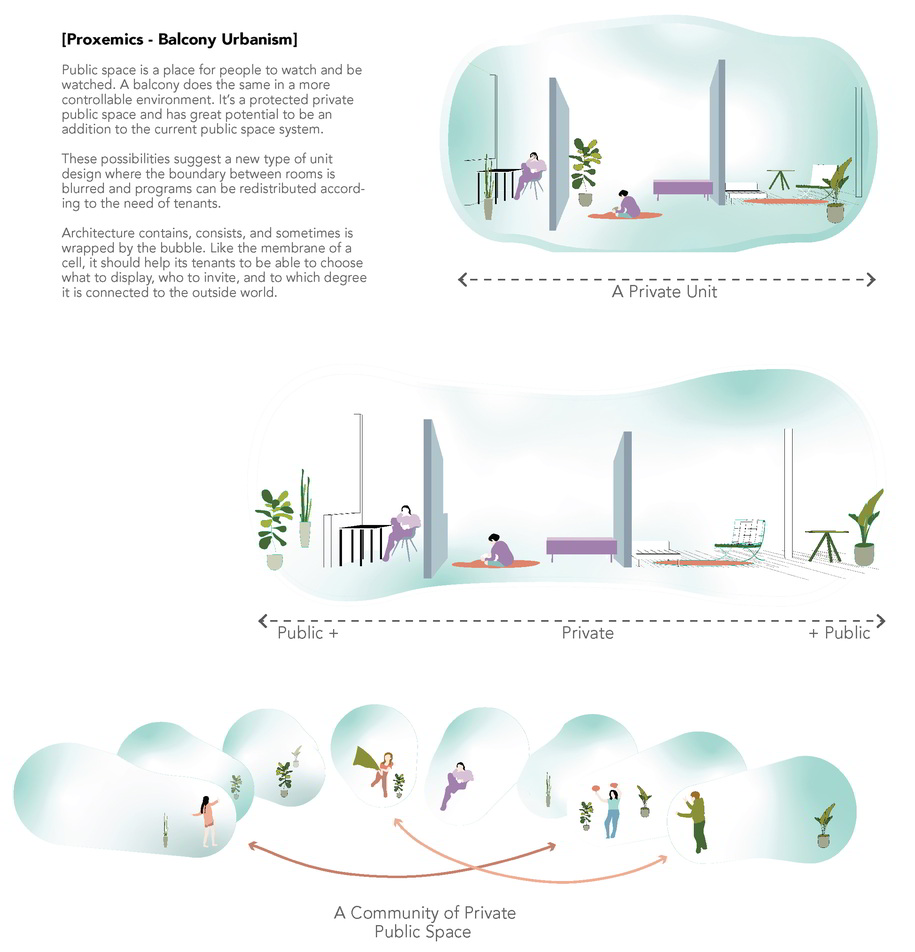 Moreover, as we set our design scenario in now to near future, delivery can be made with a drone at balcony-step, whether it is the food you just ordered by scanning QR code of a restaurant on the street or the documents you sent for printing to your neighbors. The ideal scene in our mind is where the old-fashioned way of dropping basket to the street and skybus can coexist in the same society.
Moreover, as we set our design scenario in now to near future, delivery can be made with a drone at balcony-step, whether it is the food you just ordered by scanning QR code of a restaurant on the street or the documents you sent for printing to your neighbors. The ideal scene in our mind is where the old-fashioned way of dropping basket to the street and skybus can coexist in the same society.
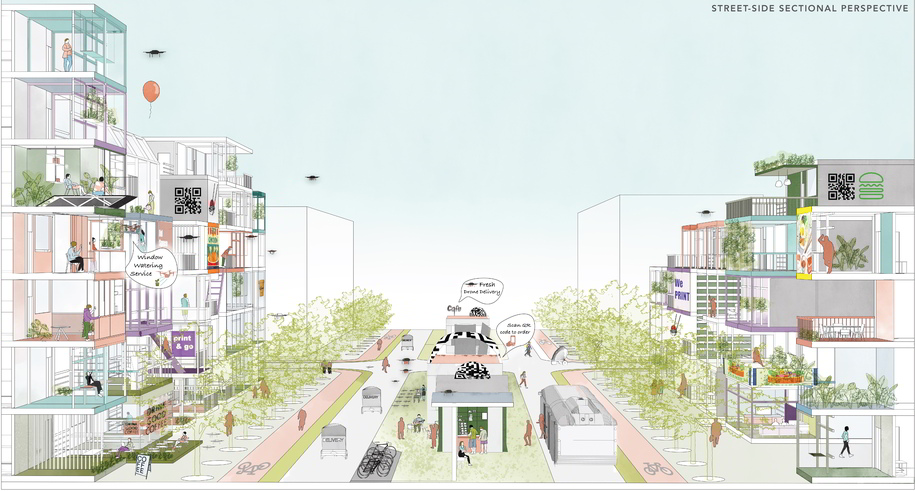
The COVID pandemic reminds us that a resilient community must have the capacity to function autonomously so that the residents’ essential needs can be fulfilled within walkable distances. We do not envision balconies to replace park, plaza, or streetlife, rather, it provides an alternative to the existing infrastructure. Instead of making everything efficient and single-functional, we ask for moderate redundancy that can be built in the living space.
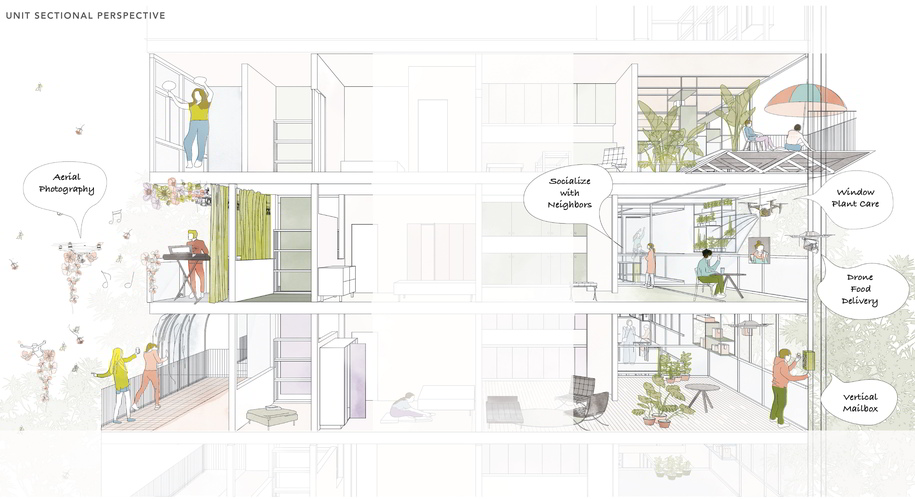
From “balcony space” to “balcony urbanism”, or ultimately the word “balcony” itself is not critical anymore, the question we are asking is really about proxemics. We always have our bubbles, the ideal size of which not only changes because of culture, climate but also public safety threats such as COVID when 6 feet apart becomes the new comfort zone. Architecture contains, consists, and sometimes is wrapped by the bubble. Like the membrane of a cell, it should help its tenants to be able to choose what to display, who to invite, to which degree it is connected to the outside world.
___________________________________________________
Facts & Credits
Participants: Zhuo Pang
Ningxin Cheng
Country: China (currently in U.S.)
The project was shortlisted in top 50 out of 440 projects.
The impact of Pandemic Architecture competition on the international architectural community was astonishing, with the number of registrations to exceed 800, with the final proposals to exceed 400 and with participants from more than 60 different countries.
Results were officially announced on the 25th of September.
_________________________________________
Check out the open call and the jury here!
READ ALSO: The Healing | Pandemic Top50